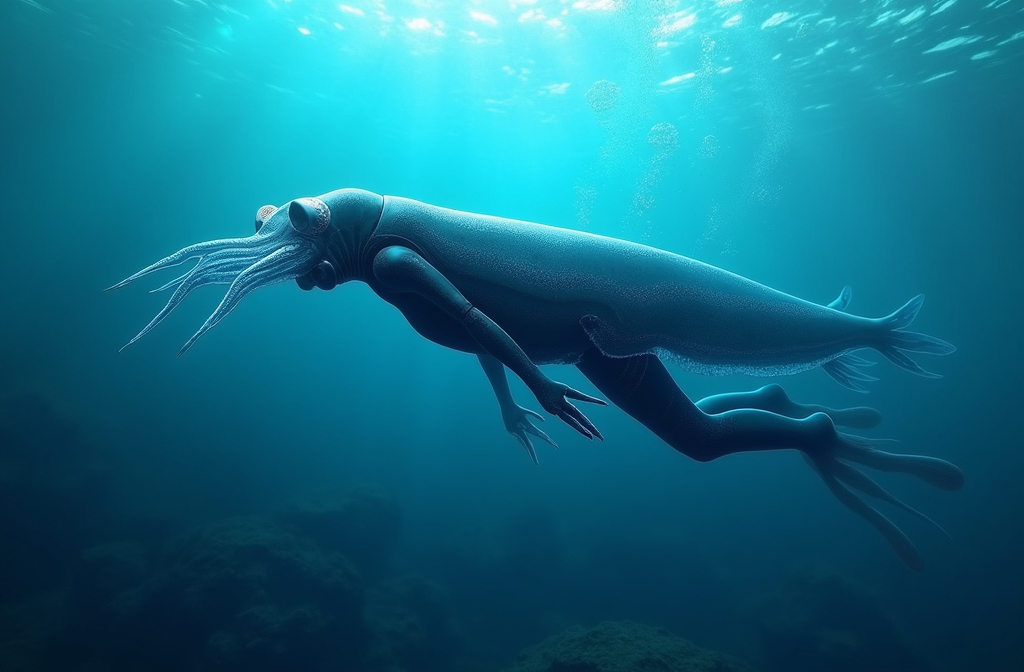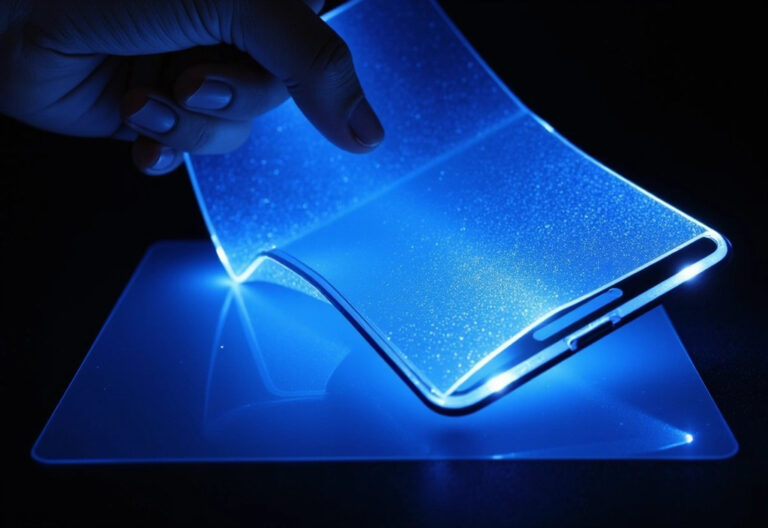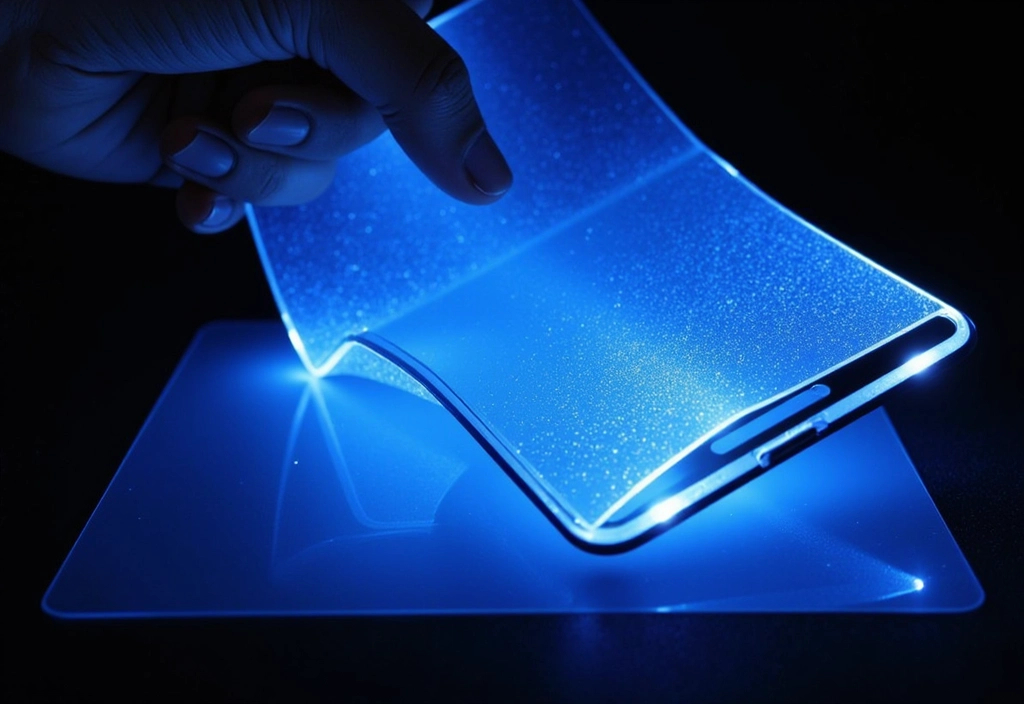Imagine a wetsuit that seamlessly adapts to its surroundings, shifting from transparent to deep blue in response to environmental changes. With a new biomimetic camouflage system inspired by squids, this futuristic vision is becoming a reality.
Researchers have developed an electrochromic display (ECD) combined with a wireless control system (WCS) to achieve real-time, programmable changes in transparency. Unlike traditional camouflage materials, this technology actively modifies light transmittance to blend into underwater environments more effectively. As a result, it offers a programmable, flexible, and water-resistant solution that could transform military operations, deep-sea exploration, and marine biology research.
Let’s explore the fascinating details of this groundbreaking innovation and how it mimics nature to achieve superior underwater invisibility.
How Squids Inspired a New Era of Camouflage
Many marine creatures, including jellyfish and octopuses, rely on adaptive camouflage for survival. However, the reef squid (Sepioteuthis lessoniana) stands out as one of nature’s most advanced masters of disguise. It alters its body transparency to match its surroundings, reducing visibility in different lighting conditions.
Taking inspiration from this incredible ability, scientists have designed a bioengineered electrochromic system that dynamically switches between transparent and deep blue. Unlike traditional camouflage, which relies on pigments or fixed patterns, this next-generation technology offers real-time adaptability based on ambient light and environmental conditions.
Breaking Down the Technology: Electrochromic Display & Wireless Control
This cutting-edge camouflage system integrates two core components, working in harmony to create seamless underwater invisibility.
1. Electrochromic Display (ECD) – The Adaptive Layer
At the core of the system lies the electrochromic display, responsible for shifting between transparency and deep blue. The ECD operates through:
- Tungsten trioxide (WO₃) and nickel oxide (NiO) layers, which undergo a redox reaction to adjust transmittance.
- Lithium-ion migration, allowing the material to modulate between a clear and colored state.
- An ultra-thin, flexible design, ensuring adaptability even in dynamic underwater conditions.
2. Wireless Control System (WCS) – Remote Camouflage Activation
To maximize efficiency, the system eliminates bulky wiring by incorporating two wireless control methods:
- Near-Field Communication (NFC) provides short-range power management.
- Bluetooth Low Energy (BLE) enables remote operation using a tablet or smartphone.
Moreover, the device is encapsulated in polydimethylsiloxane (PDMS), a highly water-resistant material that enhances durability. With this combination of technologies, the system achieves high durability, efficient power use, and stable underwater performance.
Key Features & Advantages of Biomimetic Camouflage
This game-changing camouflage system offers several unparalleled benefits:
✅ Instant Adaptability – Reacts to environmental changes in real-time.
✅ Wireless Operation – Removes the need for tethered power sources.
✅ Waterproof & Flexible – Designed specifically for underwater durability.
✅ Stealth Enhancement – Absorbs light, reducing visibility.
✅ Programmable Patterns – Enables customized camouflage in various conditions.
Most importantly, extensive testing confirms that the system maintains stable performance even after 1,000 bending cycles and prolonged underwater exposure.
Applications: Where Will This Technology Be Used?
Given its innovative design, this system has multiple real-world applications across different fields.
🛳 Military & Naval Operations
- Provides adaptive stealth for warships, submarines, and diving suits.
- Minimizes detection by searchlights and sonar systems.
- Enhances special forces’ covert operations in marine environments.
🤿 Diving & Underwater Exploration
- Helps marine biologists blend into natural habitats during research.
- Allows divers to become less detectable in deep-sea environments.
- Could lead to next-gen wetsuits with bioluminescent-responsive features.
🔬 Scientific Research & Wearable Tech
- Aids in the study of marine camouflage mechanisms.
- May contribute to the development of smart textiles and adaptive clothing.
- Could lead to self-regulating materials for various industrial applications.
What’s Next? The Future of Underwater Camouflage
While this breakthrough is already impressive, further improvements are on the horizon. Scientists are currently exploring ways to enhance durability, integrate motion capabilities, and improve deep-sea communication.
Future advancements may include:
- Shape-memory polymers for self-adjusting camouflage.
- AI-driven camouflage systems that respond automatically to surroundings.
- Extended battery life and wireless recharging for long-term underwater missions.
With these potential upgrades, we could soon witness adaptive camouflage being used in military gear, underwater vehicles, and even smart clothing for extreme environments.
Final Thoughts: A Game-Changer for Camouflage Technology
The development of this squid-inspired camouflage system represents a major breakthrough in aquatic stealth technology. By combining an electrochromic display with wireless control, researchers have created a programmable, flexible, and highly effective underwater camouflage system.
Whether for military, research, or deep-sea exploration, this biomimetic innovation brings us one step closer to real-time invisibility in water.
Article derived from: Kim, D., Seon, S.W., Shin, M. et al. Squid-inspired and wirelessly controllable display for active camouflage in aquatic-environment. npj Flex Electron 8, 7 (2024). https://doi.org/10.1038/s41528-024-00292-5
Check out the cool NewsWade YouTube video about this article!
















